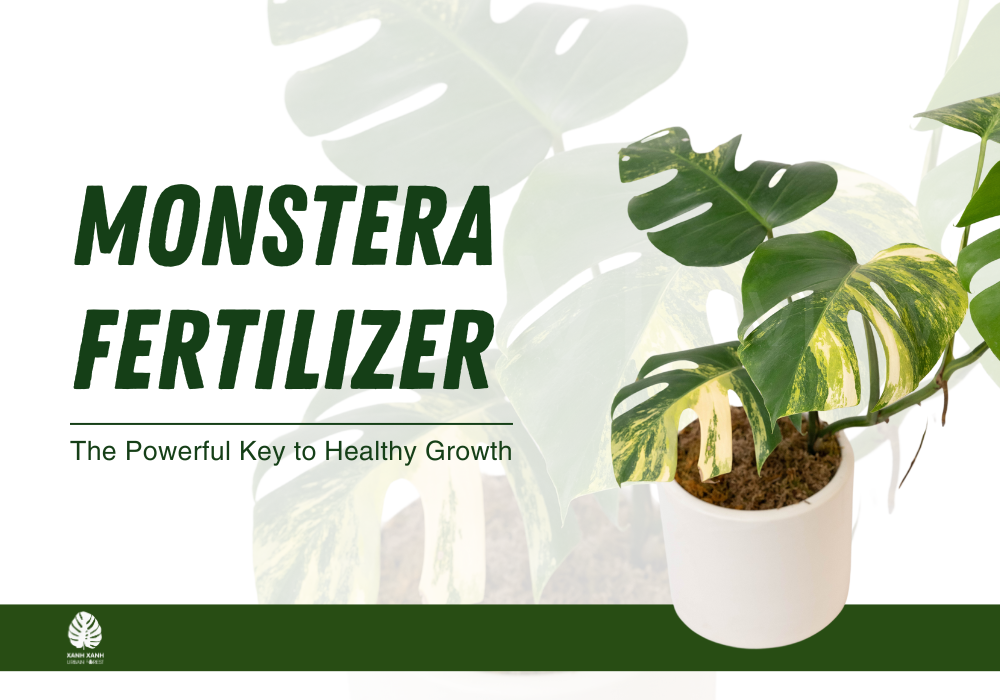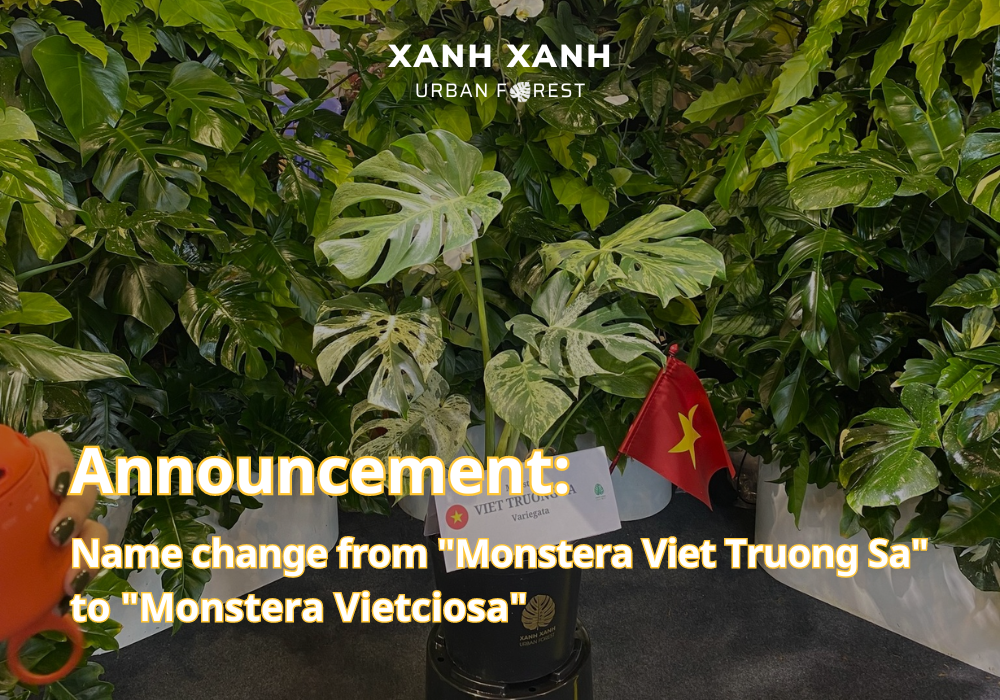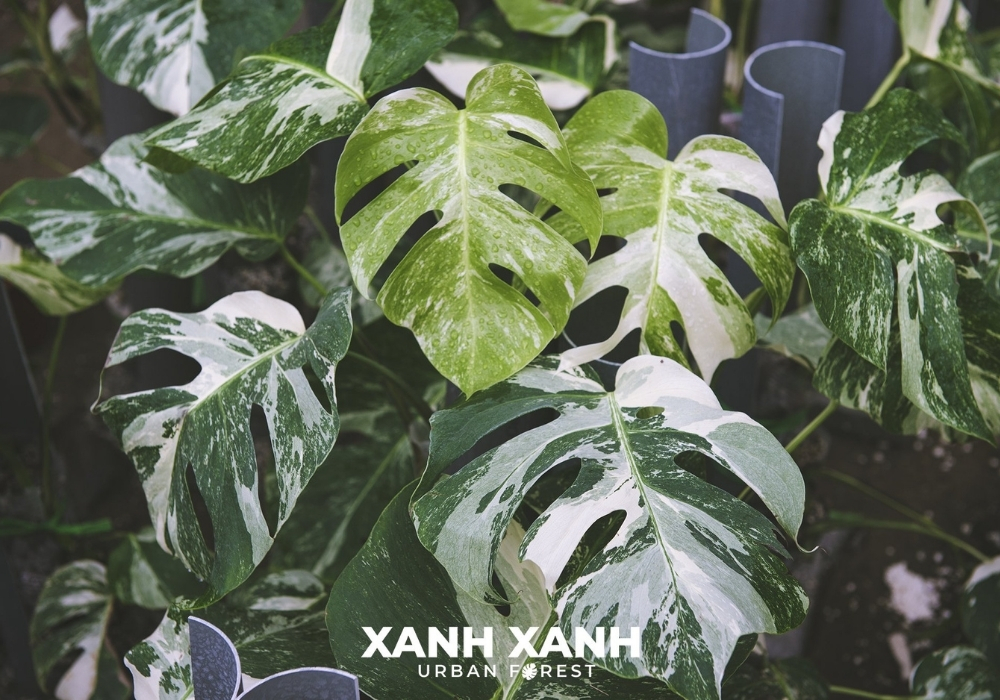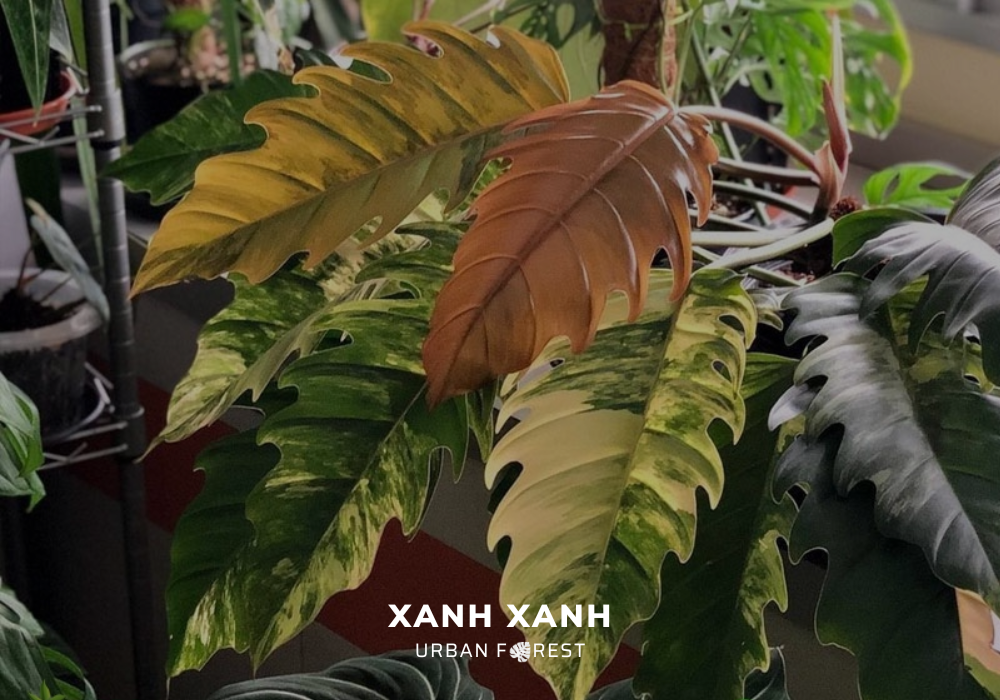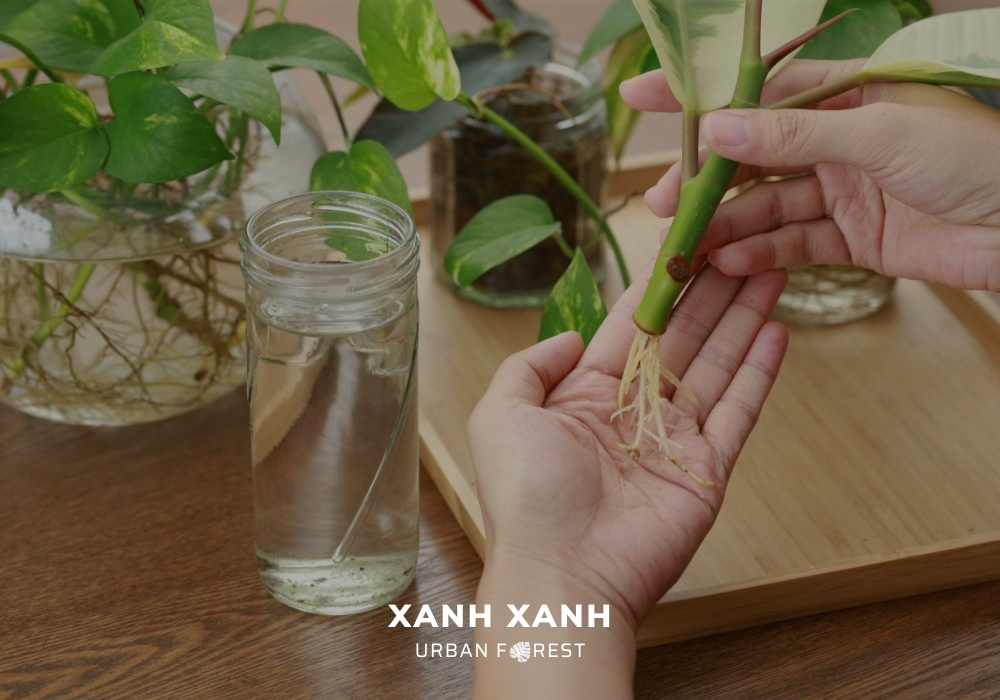Table of Contents
1. Introduction to Monstera
Plant enthusiasts throughout the world have come to like the Monstera because of its gorgeously intricately pierced leaves and gracefully cascading greenery. But to truly unlock the lush potential of this tropical treasure, understanding the art of proper fertilization is essential.
Explore the best types of fertilizer for these plants, learn how to apply nutrients correctly, and learn the essential dos and don’ts of fertilizing Monstera by reading through Xanh Xanh Urban Forest’s blog.
2. Types of Fertilizer for Monstera
Monsteras, with their captivating fenestrated leaves and natural air purifying tendencies, have become cherished companions in countless homes. But to truly flourish, they need the right diet. Just like us, they rely on key nutrients like potassium, phosphorus, and nitrogen to perform their planty magic. That’s where fertilization comes in – providing the perfect blend of these nutrients to help your Monstera reach its full potential.
Think of it like a recipe for plant growth. The ideal ratio for Monsteras is 3:1:2, meaning two parts potassium, one part phosphorus, and three parts nitrogen. By choosing a fertilizer that matches this ratio, you’re giving your Monstera exactly what it needs to grow strong and boast beautiful foliage. To ensure the nutrients reach all the right places, select nutrients based on your plant’s size and age. Therefore, choosing the perfect “manure mix” requires thoughtful consideration, ensuring your leafy companion receives the precise nourishment it needs to thrive.
2.1. Liquid fertilizer
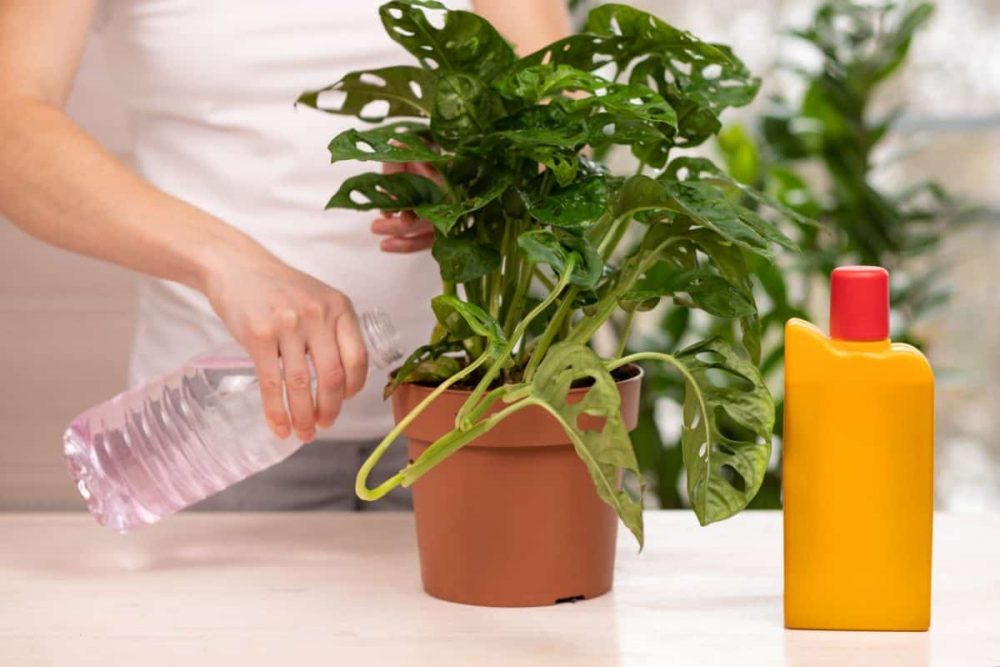
The most often used nutrients for Monsteras is liquid fertilizer. They are simple to use and can be diluted to the appropriate strength. Because liquid fertilizers come in a variety of intensities, it is critical to select one that is appropriate for the size and demands of your plant.
To apply liquid fertilizer to your Monstera, simply dilute the fertilizer according to the label directions. Then, sprinkle the diluted nutrients into the soil surrounding the plant’s base.
2.2. Dry fertilizer
For Monstera owners seeking a less frequent fertilizing routine, dry fertilizers offer a convenient solution. These come in granules, pellets, or powders and are simply sprinkled over the soil surface surrounding the plant’s base. To finish the application, thoroughly water your Monstera to dissolve the fertilizer and supply its nutrients.
2.3. Slow-release fertilizer
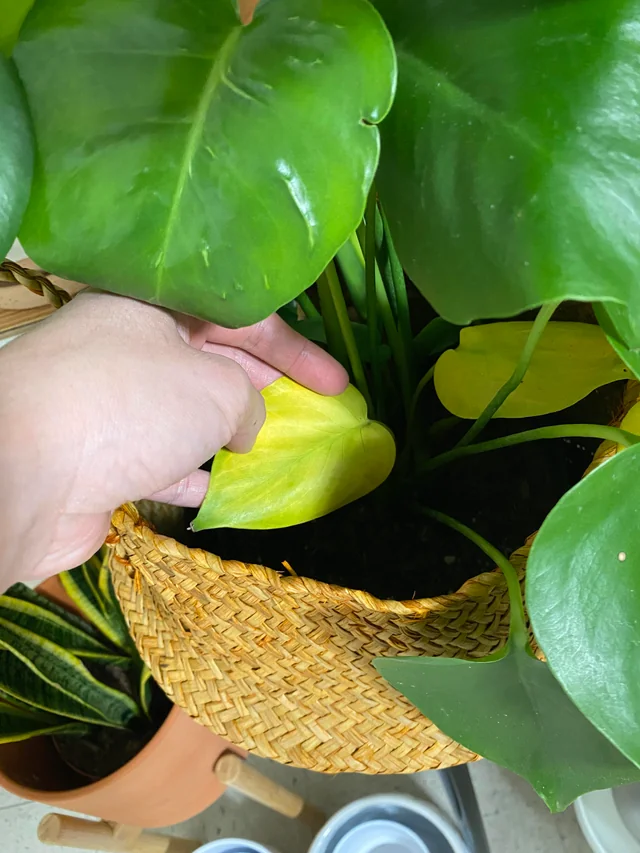
Monsteras require continuous food, although the frequency of providing them can be developed for your lifestyle. Slow-release fertilizers are a fantastic option for people who prefer less frequent fertilizing. These come in various forms, such as granules or pellets, and gradually release nutrients over several months, ensuring your Monstera receives sustained nourishment without the need for frequent fertilizing. Simply sprinkle them evenly around the base of the plant and water thoroughly to activate the fertilizer and keep your Monstera thriving.
3. How to Fertilize Monsteras
Monsteras, with their swift growth, thrive on regular nutrient boosts. They require continuous fertilization to properly develop, especially during their busy months of spring and summer. These seasons are ideal for giving your Monstera a boost every two to four weeks to ensure it thrives with thick, vivid foliage.
The steps for fertilizing your Monstera are as follows:
- Set up the fertilizer. As directed on the label, dilute liquid fertilizer. When applying dry fertilizer, distribute it equally across the soil’s surface surrounding the plant’s base.
- Give the plant a good soak. To ensure the nutrients dissolve and reach the roots of the plant, water it well after applying the nutrients.
- Avoid overfertilizing. It is important to not over fertilize your Monstera, as this can burn the roots. If you are unsure how much plant food to use, it is always best to err on the side of caution and use less fertilizer than more.
4. Dos and Don’ts of Fertilizing Monsteras
4.1. Dos
Similar to many tropical companions, Monsteras thrive in the warmth and sunshine of spring and summer. This is their photosynthetic season, where they convert light into energy, but this growth spurt also demands a steady stream of nutrients. During this crucial period, providing a balanced nutrients becomes essential for fueling their continued health and robust development.
Choose a plant food with a well-balanced N-P-K ratio, ideally 3-1-2. This formula provides the perfect blend of nitrogen (vital for leaf and stem production), phosphorus (crucial for flower and fruit development), and potassium (responsible for regulating water and nutrient uptake), ensuring your Monstera prospers.
For ease of application and precise control, liquid fertilizers are commonly preferred for Monsteras. Because over fertilization might damage a plant’s roots, make sure you dilute the liquid in accordance with the manufacturer’s directions.
Alternatively, dry fertilizers offer a convenient option for less frequent feeding. Simply sprinkle the granules evenly over the soil surface, ensuring thorough distribution. Remember to follow this with a good watering to dissolve the plant food and facilitate its absorption by the plant.
By providing the right nutrients during its active growing season, you’ll be nurturing your Monstera for lush foliage and continued healthy development, allowing it to truly flourish in its tropical paradise.
4.2. Don’ts
Since Monstera is dormant in the fall and winter, don’t fertilize it during those seasons. Throughout the fall and winter, Monsteras go dormant. They are not developing actively at this moment, therefore nutrients is not necessary. It could harm the plant to fertilize at this time.
Overfertilizing your Monstera plants can cause the roots to burn. A frequent error is overfertilizing, which can lead to wilting, stunted growth, and unwanted yellowing of the leaves.
Avoid giving the foliage of your Monstera plant direct application of liquid fertilizer. An ugly burn can result from even a single drop of these concentrated mixtures since they can be extremely acidic on plants. Avoid getting liquid fertilizer near the leaves of your plant when you apply it; instead, use it directly on the soil surrounding the plant.
5. Consequences of Over Fertilizing
While a well-timed nutrients can perk up your Monstera, excessive zeal can lead to unintended consequences. This overzealous approach, known as over fertilization, can manifest in several detrimental ways:
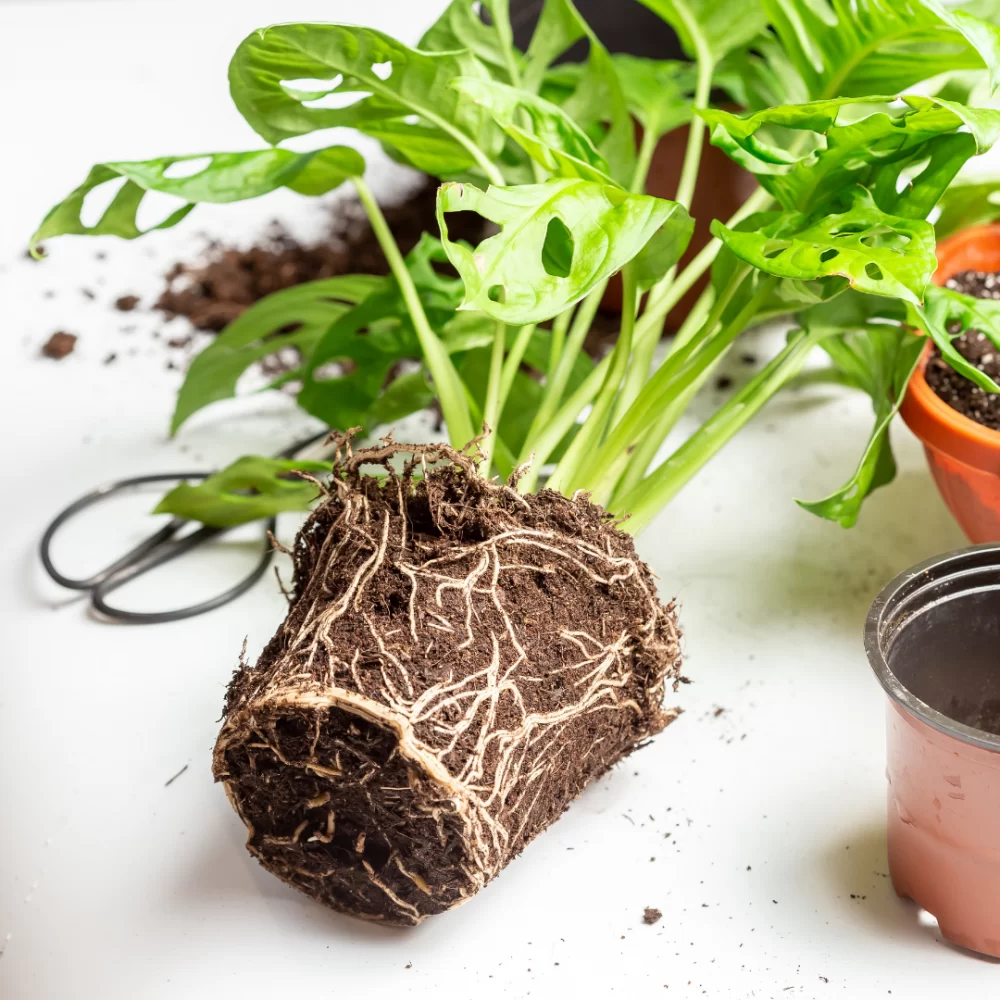
Root Burn
Visualize an excess of nutrients scorching your Monstera’s fragile roots. This “fertilizer burn” can harm or even destroy these important tissues, making it more difficult for the plant to absorb nutrients and water and affecting its general health. The severe effects of this root scorch might include stunted growth, wilting, and even plant death.
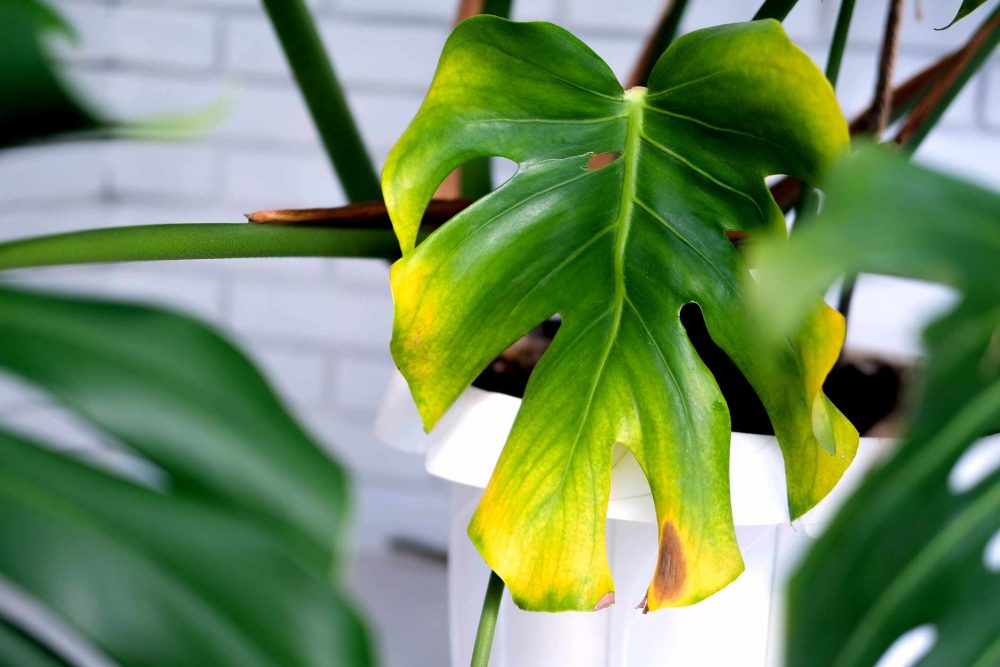
Yellowing Leaves
Imagine bright Monstera leaves turning a sickening yellow instead of staying verdant. As the plant frantically attempts to rid itself of the extra nutrient overload, chlorosis, a warning indication of over fertilization, develops.
Wilting Slump
A once-upright Monstera suddenly drooping its lush foliage? This wilt could be another symptom of the plant food onslaught. With damaged roots struggling to absorb sufficient water, the plant surrenders to dehydration, losing its turgor and vitality.
Stunted growth spurt
Instead of witnessing your Monstera reaching for the skies with vigorous new leaves, over fertilization can put on the brakes. The plant, preoccupied with combating the nutrient flood, diverts its energy away from its natural growth spurt, resulting in a disappointing slowdown in its leafy ascent.
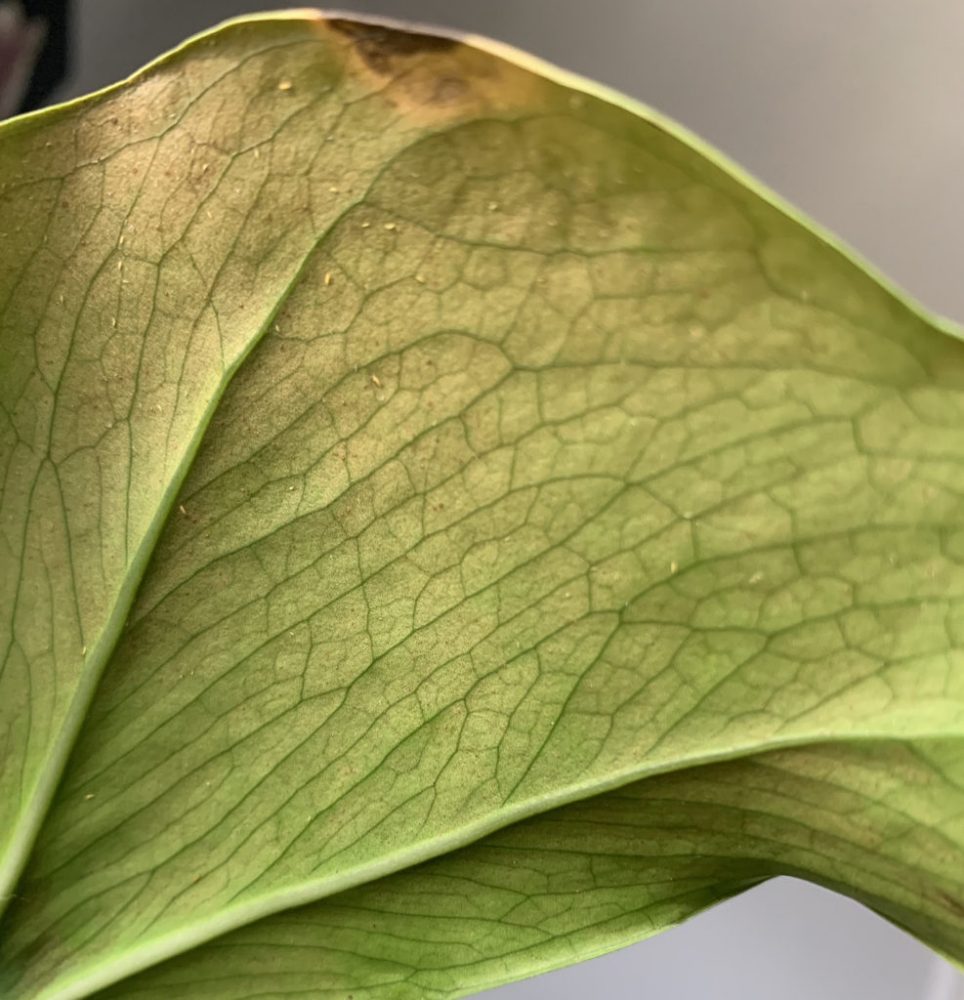
Susceptible to pests and diseases
Beyond these visible ailments, over fertilization can also weaken your Monstera’s internal defenses. An overburdened system leaves the plant vulnerable to opportunistic pests and diseases, further jeopardizing its well-being.
Therefore, when tending to your beloved Monstera, remember that less is often more when it comes to fertilization. By providing this essential boost with a thoughtful and measured hand, you can cultivate a thriving, vibrant Monstera that graces your home with its verdant splendor.
Treating over fertilization
One solution to address over fertilization lies in leaching the soil. During this process, surplus nutrients is washed away from the plant’s root system by completely soaking the soil with water. Just water your plant a lot until the extra water flows out of the pot’s drainage holes to do this.
In extreme circumstances, you can decide to repot your plant in new, unfertilized soil. As a result, the growth of your plant is given a fresh start, free from the residual effects of over nutrients.
6. Where to Buy Fertilizer
Fertilizer for your Monstera can be sold in a variety of stores. Selecting the proper plant food from the wide variety of alternatives available at nurseries is essential for taking good care of Monsteras. These options usually include liquid, dry, and slow-release varieties. Read the label carefully before buying to determine the type, N-P-K ratio, and application guidelines of the fertilizer. With the help of this information, you may fertilize your Monstera in an efficient and ethical manner.
The following stores are specifically suggested as sources of Monstera fertilizer:
- Garden centers: These places are helpful when looking for a large variety of nutrients. The staff members at many garden centers will guide you in selecting the proper nutrients for your Monstera plants.
- Home improvement stores: Relative to garden centers, they usually offer a fewer variety of fertilizers. They are still a fantastic choice, though, if you are looking for an accessible way to get plant food.
- Online: Fertilizer can be purchased online as well. If you’re looking to compare pricing or locate a certain sort of plant food that’s not accessible where you live, this is a wonderful alternative.
Some tips for buying fertilizer online:
- Prior to fertilizing your decision with a purchase, it’s prudent to delve into the garden of reviews. This will blossom a valuable understanding of others’ experiences with the product.
- Ensure the plant food of your choice originates from a company with deep roots in quality and reputation.
- Before your virtual cart reaches the checkout counter, be sure to scrutinize the shipping costs. This avoids unexpected costs from appearing in your spending plan.
- Make sure you carefully follow the label instructions wherever you decide to purchase nutrients. Using too much nutrients will harm your Monstera, therefore it’s crucial to use the recommended amount.
7. Final thoughts
Monsteras are gorgeous low-maintenance plants that can bring a tropical charm to any space. You may help your Monstera grow and thrive for years to come by following the advice in this article.
Read more: Monstera Care: The Ultimate Guide from A to Z
Xanh Xanh Urban Forest hopes that you found this blog article to be useful and educational. Please use the following to contact us with any questions:

